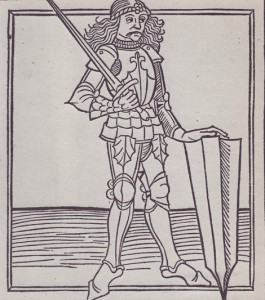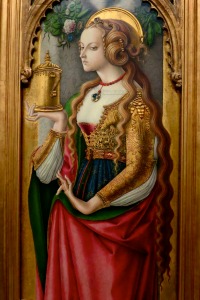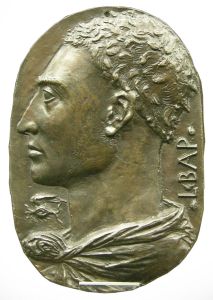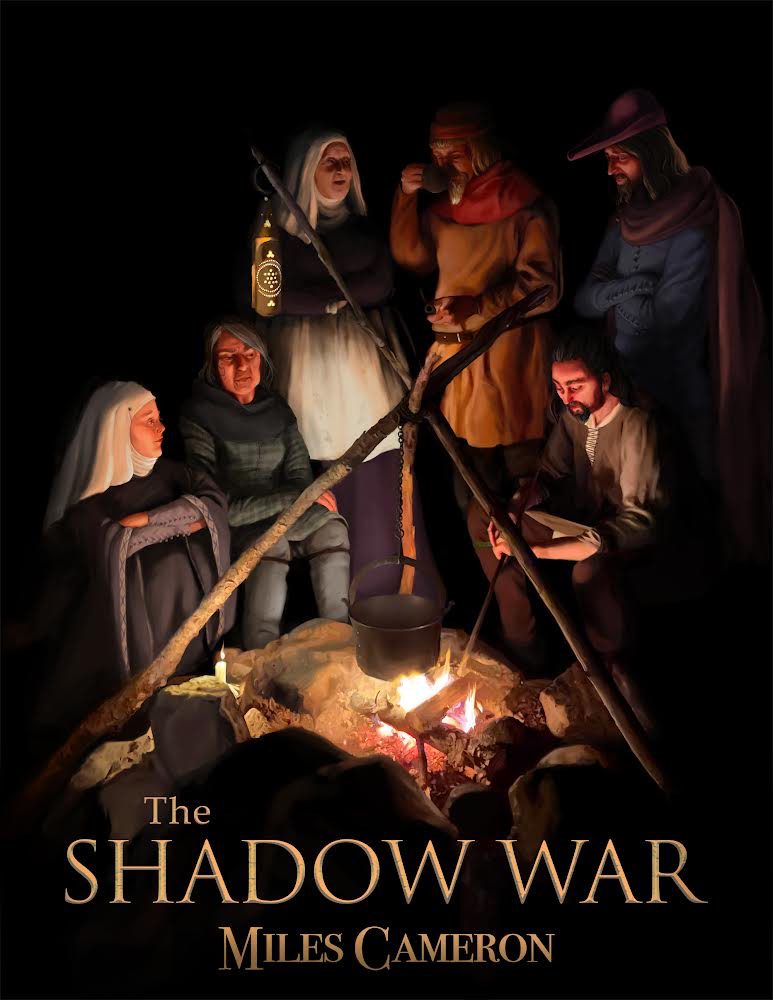
Last Friday, I finally completed the seven part epic that Tom Swan and the Siege of Belgrade has become. In the end, the full story is roughly as long as the Red Knight, or almost 200K words, or roughly as long as Alexander, God of War. Part 6 will be out June 17, and Part 7 will be out in July or August at the latest and includes, among other things, the longest combat scene I think I’ve ever written.
I suspect that Tom Swan and the Siege of Belgrade is some of my best historical writing. It was very difficult, and involved complex reconstruction, timeline creation, investigation of period sources, and lots of staring off into space, smoking the occasional cigar, and staring at maps. And Google Earth. I think I have stared at the ground around Belgrade for more hours than I’ve looked at hiking routes in the Adirondacks.
The last time I wrote, I examined some of the historical problems, but this time, I thought instead I’d examine more from the writer’s point of view. What are the problems in an historical novel? And how do you solve them? How do you write one?
I’m going to start rather where I left off the last time, with problems… First, some statements. You may disagree, but these are ‘conditions’ of my writing. These frame the way I do research and…well, everything.
1) I have little time for modern nationalism. It certainly has no place in the past, at least to my historical eye. So I don’t see Turks as the ‘bad guys’ and I certainly don’t see Hungarians or Christians or even Englishmen as the ‘good guys.’ Tom Swan and his friends are the protagonists… it’s their show, so to speak. But that may not make them ‘good’ or even ‘right.’

1a) The corollary to this is that I’ll spend more time exploring the protagonists POV, and that may even involve issues that make the reader uncomfortable. As the Siege of Belgrade progresses, Swan becomes more religious and even begins to make time to pray. This is not some Christianizing missionary work on my part, but rather my observation of soldiers in similar situations. When on crusade, the ‘crusade’ message seeps through. Men at war seek to justify their own, sometimes horrible, actions. Religion helps.
2) I seek to explain to the reader the ‘how’ and the ‘why’ of significant events. I’d like this to be fun and entertaining… it is not a history lesson. But I want to get the history ‘right’ and if I speculate, I want those speculations based on the best evidence available. Oh, yes, and sometimes I get this wrong… Anyway, 3 and 4 are really corollaries of this. But sometimes, they are their own thing… literary themes, not just historical ‘facts’ or even opinions.

3) In this novel, I wanted to address the role of women as whores and laundresses with Medieval armies. I wanted to give women a ‘voice’ that was not the voice of the victim or servant or ‘girlfriend’ and yet I needed that voice to be authentic and not ‘modern.’ In the end, I again found that voice more realized in texts from late Medieval Christianity than texts from modern feminism, although I tried both. That is not to say that this is ‘my’ belief about women, their role, or their choices….

4) If you happen to be from Eastern Europe, especially Hungary, Serbia, Albania, Romania, Turkey or even Poland or Russia or Ukraine, the events of the 1456 Siege of Belgrade are central to your ideas and basic chronology of history, and the heroes and villains of the piece are mythological figures. On the other hand, if you are American, British, Scots, Irish, Australian, Kiwi or Canadian (like most of my readers) these events are ‘news’ and I’ll wager that I have readers even now who don’t know who ‘wins.’ I have duties to both sets of readers. In my view, I owe the Eastern Europeans a respectful examination of the events with which they are familiar, but I also owe the English speakers a comprehensible entry into a very complex tale.

5) And finally… Like Hamlet, I believe that ‘There are more things in heaven and earth, Horatio, Than are dreamt of in our philosophy. ‘ There is an element of magical realism to Tom Swan that will seem almost insignificant to Fantasy readers, but I find it essential and I think that it helps the reader to be ‘in the moment’ for the period. The Head of Saint George is real. The Ring of the Conquerer has magical powers. And was that Saint Mary Magdalene appearing to Tom? I don’t offer Gandalf like spells, but I want the reader to enter into the mind of the day, if even in a very small way…
Each of these points can be debated, and other writers might well find different paths, but I thought some readers and perhaps a few writers would like to see me explore why I did what I did.
The first element has to do with Tom Swan as a character. Tom Swan is English because that makes him more approachable by an English-speaking audience. There were Englishmen (and Scotsmen and Irishmen) everywhere in the military world of the fifteenth century, and they got as far afield as Hungary and Italy. But they weren’t common, and they had a budding civil war of their own at home. However, I suspect that if Tom was Tomas Suane of Genoa, or Tamás Sovány of Buda, most English-speaking readers would find it harder to ‘get into’ the character.
And once you make this call for the protagonist, you’re stuck with it. Thomas is now the captain of a company, because I felt that was the best way to give him the ‘view of the battlefield’ that would allow the reader to make sense of the Siege of Belgrade. I admit that there’s another possible version where Tom is a foot soldier or a simple courier and neither he, nor the reader, ever meets Vlad Tepes or Janos Hunyadi, and the actions of the siege remain a misery of tension and terror without the protagonist or the reader having a clue to the tactics, strategies, and intentions of the contestants. Such books often appeal to me, and I might write one eventually, but to me, that’s a kind of story better told about Gettysburg or Isandlwana so that most readers need little or no explanation of the historical events themselves…
And I’ll stay with the character and ‘Englishness’ of Tom for point four, as well. An Eastern European reader will note at least one action performed by an English archer (one of Tom’s) that is usually ascribed to the Hungarian or Serb or Wallachian or probably Croatian hero Titus Dugovics who died throwing the first Turkish flag bearer off the walls of Belgrade. Sam Cressy just shoots him off, and there probably was never a Titus Dugovics, who looks remarkably like an 18th century scam…. I’m Scots in my ancestry, so I’m very inclined to love romantic 18th century scams (Bonnie Prince Charlie, anyone?) but this sort of alteration is again, inserted to give action to the protagonists and their friends. No slight is intended to the thousands of heroic Hungarians, Serbs, Wallachians, Albanians, Greeks and Germans who died at Belgrade… on both sides…
Point two… my desire to teach the reader a little history, may be my worst habit. I’ve gotten bad reviews because of it, I suspect it sometimes harms sales, and I can tell you that it keeps me up nights worrying about how to make a character arc or a plot work without lying about the history… But… I believe in history. I would agree with many critics that history can be full of lies, distortion, racism, culturalism, sexism and other forms of crap, but it is simply the recorded memory of the human race, and without it, we’re… like anyone else in a relationship, who suddenly has no memory of who did the dishes last Thursday.
Lately there’s been a whole lot of rather left-brain criticism of history which seems to devolve down to the notion that people often lie in recording their stories, thus, history is all lies, and no one can ever tell what happened in the past. This sort of always/never thinking is convenient for politicians and bad academics who want to pretend for the purposes of a paper that Hildegard of Bingen and Margery Kempe were contemporaries, but it’s really no harder to work through human error and bad record keeping to sort the Siege of Belgrade in 1456 than it is to figure out what the hell the Canadian Government is doing in Iraq. That is to say, it takes a little work, but it is hardly impossible and with a little luck and a little help from archaeology, it’s possible to settle some home truths, often uncomfortable and always complex. And oh, BTW, I laughed a great deal when I discovered that the Onion, which makes me laugh anyway, had an article about Barrack Obama comparing the fighting with ISIS to the Siege of Belgrade. No, really. Find it yourself.
OK, here it is.
Just for the record, I think it would have been funnier if it had been about the Siege of Constantinople. Buy me a beer if you don’t get that and I’ll explain…
I wrote a whole blog on the research for 3) above. (here) There’s still more to say…
Anyway… the process. That’s what I started out to discuss, and then I blathered. Of course I start with character, and that’s why I blathered about Tom Swan and his nationality. And the next step is a detailed reconstruction of the history. I see this as being very much like reconstructing a period garment or a sword or a recipe… I do research, I look at other people’s research, I learn a lot of new terms and obsess on some details, and finally I can see how the history worked. And once I have that, I have the frame of the story and often I have some essential incident too. But incident is not plot. This is an essential issue which I think many writers miss; in fact, I’ve missed it form time to time. If I create a character and tell the story of the American Revolution by having him be present at every battle…
….I don’t really have a good story. I may have a great character, and some great fight scenes… but it won’t be satisfying. I recently helped judge an Historical Fiction contest, and the biggest single ‘error’ committed by many aspiring writers was to simply place their character(s) in important battles. Odd, because I doubt that most of us would place our characters next to the creation of, say, important art works (interesting idea, though) or monuments. I can see a story in which the character was present for the signing of Magna Carta… but there’d have to be some other action…
And so with battles or sieges or almost anything. The history may be the frame; some incident from history may fit perfectly into the story, but the story needs to have its own plot. The story might be ‘How Tom Swan learns to command’ or ‘How Tom Swan learns that he doesn’t really like being in command.’ That’s a story. But the story is not the Siege of Belgrade. That’s the background.

Usually, by the time I understand the history, a story has written itself for me. This is a difficult process to explain, and it’s even more tangled with Tom Swan because instead of a single book 500 pages long, I write Tom Swans in installments and each one has to stand (at least for while) alone. Each one needs a story, even while also telling an historical story… So, for example, the first three installments of ‘Siege of Belgrade’ are actually about the sheer complexities of something as international as ‘crusade’ in the mid-fifteenth century. That’s the ‘History story.’ But Tom Swan doesn’t know that… he’s trying to survive the Malatestas, match wits with Leon Battista Alberti, get the girl, and raise a company of lances. And maybe save Venice… He’s trying to have a career in renaissance Italy, which is a sort of plot all by itself.
And the second half of the story, when we move to the Hungarian plain and the fighting, has to have the same feel. It is not enough to relate the course of the fighting. It has to be a story… the same story it was in Venice and in Rome. Surviving a papal election is as much part of Tom Swan’s ‘experience of the crusade’ as storming a gun emplacement in the Turkish lines on July 21st, 1456. And reconstructing experience so that the reader has a feeling of having ‘been there’ is, for me, what Historical Fiction is about.
And, oh by the way, I’m at page 100 in ‘Plague of Swords,’ which is Book Four of the Traitor Son’ or ‘Red Knight’ series. Now… back to work. That is, real work…


Reblogged this on parmenionbooks and commented:
One of my fav series , so great to have a look behind the curtain
Thats a long one, almost could have written another Tom Swan installment instead…
My serbian (archery) friends really like your siege of belgrade blogs, and are looking forward to the last Tom Swans 🙂
I needed to ask you whether Albanians fought in the Siege of Belgrade (I mean on Hunyadi’s side)?
To the best of my knowledge, yes.
Titusz Dugovics as Croatian hero!!!???Wooww…😊very interesting…tell me more.